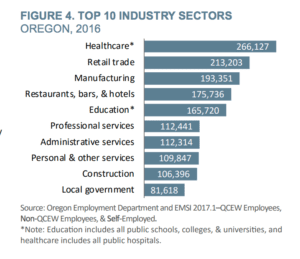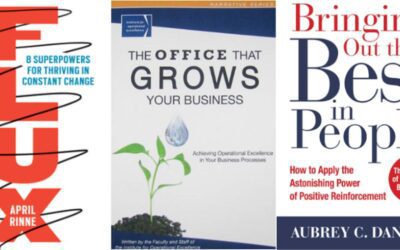Recently the Oregon Talent Council (OTC) released their latest report on the manufacturing workforce landscape in our state. OMEP is proud to partner with the Oregon Talent council on several initiatives, including our Smart Talent program.
Over the past two years the OTC has sought out the opinions and experiences of employers across the state, and has worked with those employers to match them with educational resources that will enable them to solve this “mission-critical economic issue.” Read on for important information about Oregon’s employment landscape.
What are Oregon’s Biggest Employment Challenges?
Oregon’s talent gap is getting larger. The labor market is tightening, almost one in four jobs have retirement exposure, and business are hiring one in five jobs from out of state because they cannot find talent locally.
-
 Unfilled vacancies are costly to Oregon businesses
Unfilled vacancies are costly to Oregon businessesAn average vacancy is 90 days and costs a business $45,000 in lost productivity/revenue, according to data from Randstad Technologies. In winter 2017 there were over 50,000 vacancies in Oregon, which equaled a lost opportunity cost of $2.34 billion ($>9 billion per year) to Oregon businesses.

Today’s unfilled positions are primarily due to skill gaps
With ever-changing technologies and the doubling of knowledge every year instead of every generation, workplace skills become quickly outdated. This is supported by data that projects 35% of core skills will change between 2015-2020.
This pace of change is demanding new skill competencies, not necessarily new degrees; and training that can be done in bite size pieces and in flexible formats for those that are working.
Incumbent workers are key to filling the current talent gap. With over 80 percent of the workers needed ten years from now already in the workforce, Oregon can’t solve its talent gap by focusing solely on the pipeline of new graduates.
The Talent Plan affirms that the availability of talent, more than any other single factor, is the number one challenge for employers who wish to compete, grow, and thrive.
Because employers define talent as the combination of education credentials, applied skills, and industry experience, the challenges and solutions go beyond the classroom. The Talent Plan also concludes that solving the talent gap identified by Oregon employers will require significant attention to and targeted investments in upgrading the skills of those already working (our incumbent workforce).
- Invest in agile and industry-led training models that keep existing workers up-to-date.
- Foster and reward a culture of learning among employers.
- Ensure Oregon’s education and workforce systems fund and support the inclusion of employability skills into curriculum and flexible models of continuous skill development.

The Council believes that the findings and recommendations of this industry-defined Talent Plan provide a framework for the participating industries to move forward and address their key talent issues now and in the future.
The main body of the report is brief, with an array of supporting data and research in the appendices. You can find more information online atwww.oregontalentcouncil.org. If you wish to discuss any aspects of the 2017 Oregon Talent Plan, please feel free to contact Melissa through OTCchair@oregon.gov.



